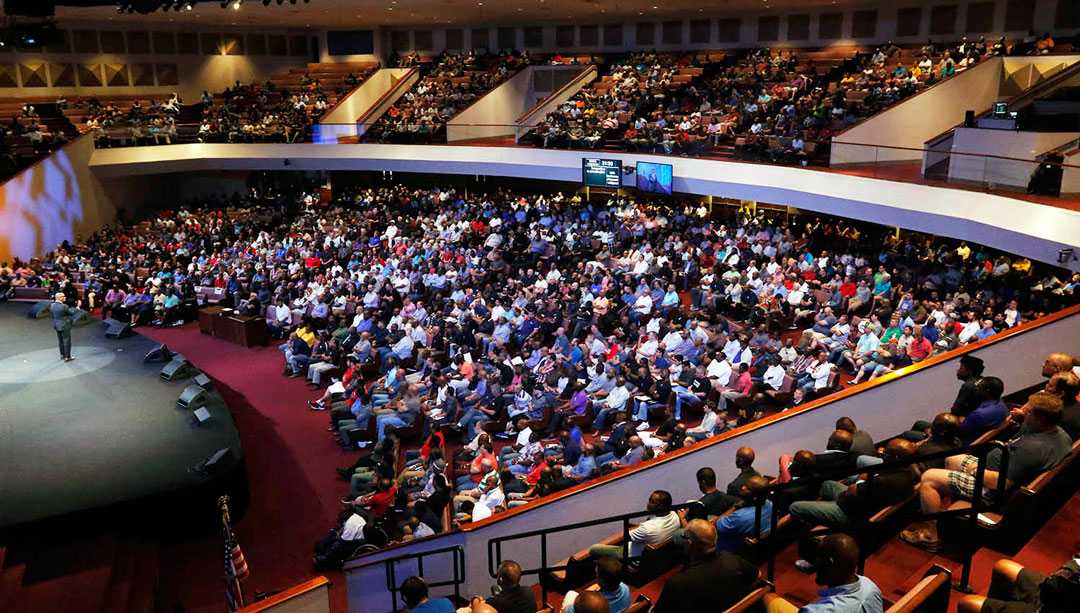Clair Brothers reinforces Bible Fellowship
- Details

The venue seats around 3,280 people, shaped in a semi-circle, with large balconies and unobstructed sight lines. But as time passes, so too does the efficiency of audio components while the need for increased acoustical quality grows. The bottom line: the old equipment was outdated and no longer up to par. Along with upgrades to its lighting and video systems, installed by master AVL integration firm Clair Solutions, the church determined its best path forward to meet current and future needs was to install a new sound reinforcement system.
“The existing system was installed in 1995, and many of its parts were failing. Even when it worked properly, it wasn’t meeting the needs of OCBF’s more contemporary services,” explains Mike Mason, regional vice president for Clair Solutions’ Dallas office. “When it originally went in, the major requirement was speech reinforcement - most of the music was delivered via organ and choir. What they needed was a brand-new system that would take them to the technological cutting-edge, so they made the decision to gut everything and essentially start over.”
For audio, OCBF’s vision involved grander musical impact, so the engineers at Clair Solutions called on sister-company Clair Brothers for a beefy line array comprised of C15 loudspeakers for mains and kiTCurve12s for sides to energize the sanctuary, with powerful low-end support from eight Clair Brothers CS218 subwoofers.
The side areas requiring coverage in the Oak Cliff sanctuary are both on the floor and on the balcony level which also wraps far around the sides of the stage. The challenges with balancing the tuning of a coaxial or other point source in areas like this are because there is always a defined on-axis point where there is slightly more high frequency content than surrounding areas within the coverage pattern. The curved array as an out-fill minimizes the contrast that results with having a system combining point source-fills and line arrays as mains.
Sadd says: “It’s an area that is historically difficult. Picture the point-source coverage pattern as a bull’s-eye. You can make the centre point match the sound of most the room, but if you do that then the sound gets quieter off-centre. And if you make the ring around the centre match the room, the centre becomes hotter. It’s a balancing act between having a dull ring around a matched hot spot or a hot spot in the middle of a matched ring.”
The curved array approach is born from what Clair Brothers does for large-scale sound reinforcement projects in arenas. Known as ‘270° coverage’, main left/right arrays with seats wrapping around the stage’s sides. Sadd continues: “This kiTCurve12 array out-fill approach shines at Oak Cliff. The kiTCurve12 has the same high-frequency components and therefore similar voicing as the C15 mains.”
When it comes to the rest of the system, the eight CS218 subwoofers are installed in the form of a flown endfire cardioid array that pushes more low-end energy to the seats and less to the stage.
Clair/Lab.gruppen D-Series multi-channel amplifiers with integrated Lake DSP power the system, with additional processing from stand-alone Lake LM44 DSPs. Along with a Clair Brothers 1AM stage monitor package, other modern components installed were Studer digital consoles at FOH and broadcast (with full Pro Tools recording and playback capabilities) that provide synergistic user control for OCBF’s professional audio staff.
Antelope digital clocks keep the entire AVL system in sync while Roland personal mixers and a Shure wireless microphone system helps round out the overall increase in powerful sound from the stage.
(Jim Evans)
















